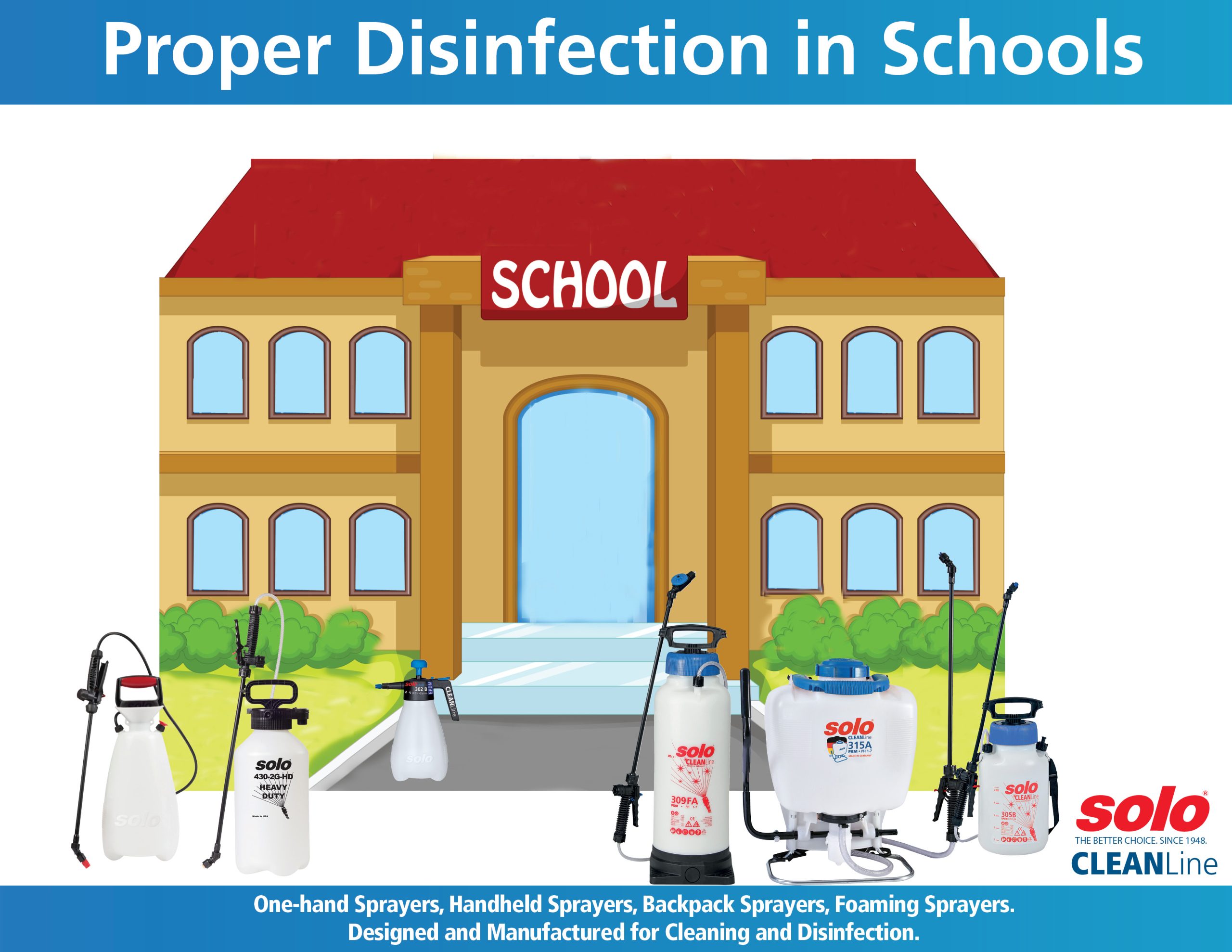
Flu season is here, and schools are concerned with stopping the spread of the flu. Since children are the most vulnerable to the flu, schools can quickly become ground zero for flu outbreaks.
The main way that the flu can spread is by “tiny droplets made when people with flu cough, sneeze or talk.” A person can spread the flu before they show symptoms. Once a person begins to show flu symptoms, dozens of people could be infected already.
When you think about all the surfaces kids touch or how much they talk, preventing the spread of the flu seems like a monumental task for schools. An innocent conversation, an answer to a teacher’s question are opportunities for pathogens to spread.
Kids bring home the flu virus and infect parents. Parents then spread it at work. It’s an overwhelming domino effect that often costs schools and businesses billions.
So, how can schools, sometimes with razor-thin budgets, keep the flu under control?
Proactive vs. Reactive Infection Control
Schools should take a proactive approach to keep the spread of the flu under control. On-going training on the best way to clean or disinfect surfaces is critical. School districts need strategic infection control plans in place before the start of the flu season.
Daily cleaning of entire facilities and the disinfection of “high” touch areas are crucial for infection control. The article “Protecting Clients During Cold and Flu Season” suggests that facilities have “high-touch points such as railings, door handles, and light switches sanitized each day. Then higher risk areas such as restrooms can be disinfected at the lowest level allowed daily.”
Schools can execute a similar plan. Janitors do not need to disinfect every single surface. Instead, they should focus on disinfecting key areas. But janitorial staff need to understand the difference between cleaning, disinfecting, and sanitizing.
Cleaning vs. Disinfecting vs. Sanitizing
Cleaning, sanitizing, and disinfecting are not the same thing. But many people use the terms interchangeably.
Not understanding the difference between the three can have real-life consequences. For example, if a janitor only uses a general-purpose cleaner to wipe down a high-touch surface during flu-season, then the virus may still survive on the surface, and the risk of an outbreak increases.
Cleaning
Cleaning is not an all-encompassing term. Cleaning refers to the process of removing dirt, impurities, and germs physically. The cleaning process eliminates germs and bacteria but doesn’t kill them.
Disinfecting
Disinfectant kills germs and bacteria on a surface. For a product to be classed as a disinfectant, it must “reduce the levels of pathogens by 99.999 percent in five to 10 minutes.”
Disinfectants usually need to dwell to work. If a janitor is unaware of the correct dwell time for a disinfectant, they might wipe it from a surface before it has a chance to kill bacteria and germs.
Sanitizing
Sanitizers and disinfectants do a similar job, but sanitizers only reduce the number of germs and bacteria on a surface. Regulations are less stringent for sanitizers. A product needs to ” reduce microorganisms on a surface by 99.9 percent within 30 seconds”to qualify as a sanitizer.
Proper Chemical Application is Key
Understanding the difference between the three terms alters how chemicals are applied to a surface, but it’s not the only important factor.
Sprayers play a crucial role in proper chemical application. Choosing the right sprayer to apply chemicals is necessary for infection control.
The Right Tools
Chemicals are the primary concern for many people. But the tools needed to apply chemicals are equally important.
Schools use trigger sprayers to apply cleaning solutions to a surface. But trigger sprayers aren’t the best choice.
Trigger sprayers are inexpensive, but they slow workers down because of the need to constantly depress a trigger, produce more waste, and can’t always achieve the necessary dwell times needed for disinfectants to reach their kill claims.
Benefits of Pressure Sprayers
Pressure sprayers are an excellent choice for cleaning and disinfecting schools. The pump-to-pressurize method helps janitors move through a school faster by eliminating the need to depress a trigger.
Here are the benefits of using a pressure sprayer:
- Holds more chemical than trigger sprayers
- Covers a surface with product faster and more uniformly
- Reduces finger fatigue
- Seal compatibility—match the sprayer to the chemical for increased longevity
- Produces less waste
- Foaming sprayers allow for dwell time
Schools can optimize chemical applications with the use of a pressure sprayer.
A Matter of Public Health
Schools are at the front line against the spread of the flu. Staving the spread of illness is an on-going task, but it’s never too late to implement better strategies. Janitors are a school’s defense against an outbreak. Schools need to prepare them to shoulder this responsibility.
